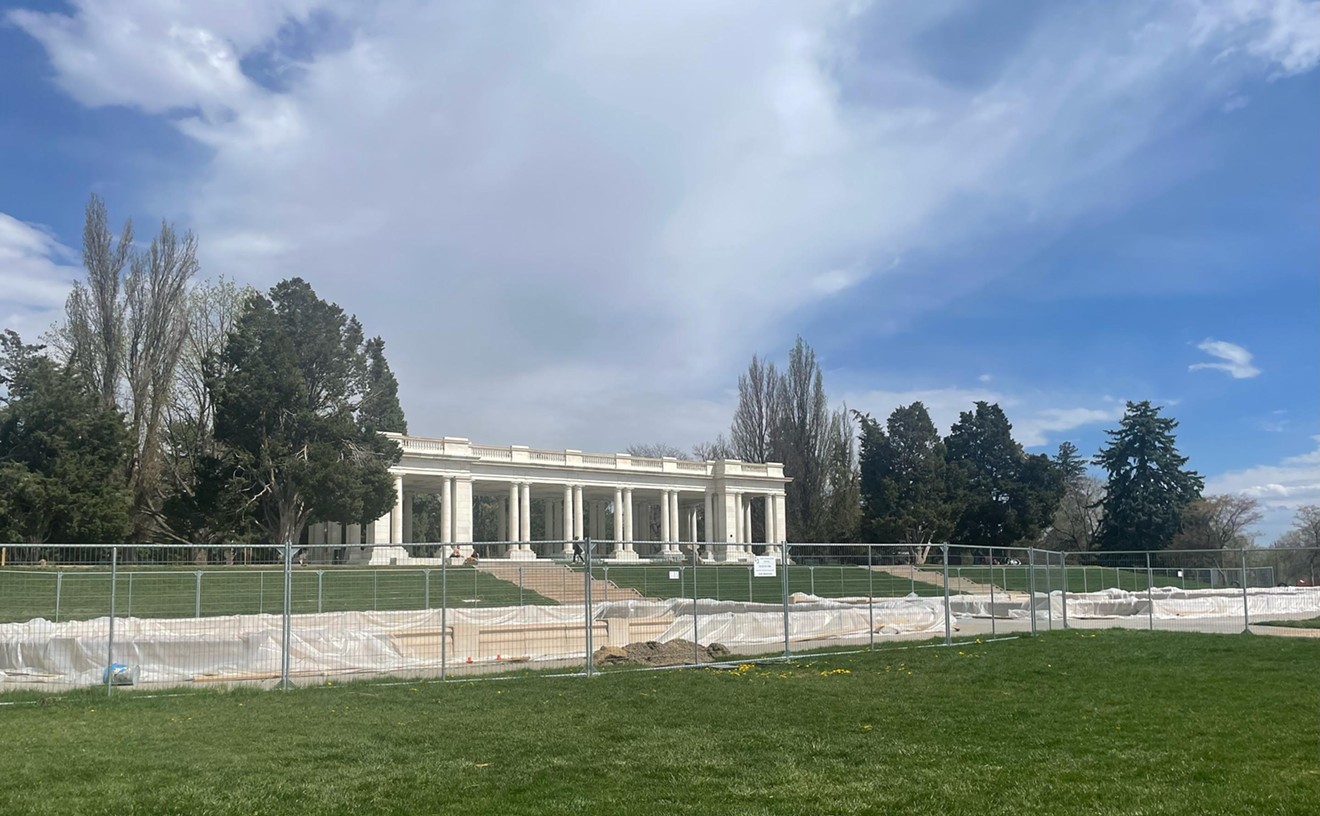Fracktivists call it poison. Governor John Hickenlooper sips a special formulation of it like a fine craft beer. But what's really in the billions of barrels of fracking fluid that oil-and-gas drillers are pumping into the ground across the country?
The simple answer is water — and a little something extra. The typical recipe for fracking a well calls for 90 percent water and about 8 or 9 percent sand. The complicated answer has to do with the little something extra.
See also:
- How Tisha Schuller went from environmental activist to industry champion
- The price of fracking in Colorado
The hydraulic fracturing process of freeing oil and gas from tight shale formations has been around for more than sixty years. But the increasing demand for the process as "easy" pockets of fossil fuels are exhausted has produced increasingly sophisticated formulations. Dozens of chemical additives are now used at various stages to help fracture the shale, expand the fissures that allow oil and gas to flow into the well, reduce friction and flush the wellbore.
To get things rolling, companies frequently use a dilution of hydrochloric or muriatic acid to dissolve debris in the well and help open fractures. That's followed by biocides such as glutaraldehyde (used in disinfecting dental equipment); more acids and scale inhibitors, such as ethylene glycol (antifreeze), to help stabilize the mixture; friction-reducing agents, such as potassium chloride (used in everything from fertilizer to food processing to heart-stopping lethal injections); corrosion inhibitors (including industrial solvents); gelling agents, primarily guar gum (a thickener found in many soups and condiments); and perhaps a dash more ethylene glycol as a cross-linking agent to enhance other solutions.
Companies are required to file material safety data sheets for every chemical employed at a drill site. Residents of some states, including Colorado, can also look up the ingredients of the fluid used at a particular drill site on a registry found at fracfocus.org; while companies are allowed to shield the exact proportions of some proprietary blends as "trade secrets," the site presents detailed information on the maximum concentration allowed. For example, a well operated by Noble Energy close to I-25 north of Fort Collins uses more than fifty chemicals in its fracking fluid, in amounts so small they're calculated in fractions of a single percentage point — even in ten-thousandths or less of 1 percent.
Fracking opponents contend that those fractional amounts don't seem so negligible when you take into account the toxicity of many of the ingredients and the staggering volume of water required to frack a single well — from one to eight million gallons. That presents a formidable treatment-and-disposal problem for the tainted wastewater, the possibility of surface spills — and a fear of groundwater contamination, since half or more of the fracking fluid pumped into the ground is never recovered.
Two years ago, Governor Hickenlooper declared at a Colorado Oil and Gas Association meeting that groundwater contamination was "almost inconceivable" in the state, since the wells extend thousands of feet below freshwater aquifers and are sealed after use. Earlier this year, the onetime geologist boasted to a Senate committee that he'd even sampled a glass of fracking fluid to demonstrate its harmlessness. But the version Hick quaffed is a special "green-friendly" prototype that Halliburton is developing, sourced from the food-additive industry — heavy on the hydrogenated vegetable oil and sulfonated alcohol but lacking the antifreeze, industrial solvents and other nasty stuff found in your average frack.
"It was not particularly tasty," Hickenlooper told the astonished senators, "but I'm still alive to tell the story."











